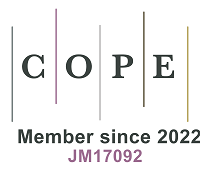REFERENCES
1. Hong, W. J.; Jia, H.; Ma, W. L.; et al. Distribution, Fate, Inhalation exposure and lung cancer risk of atmospheric polycyclic aromatic hydrocarbons in some asian countries. Environ. Sci. Technol. 2016, 50, 7163-74.
2. Kim, K. H.; Jahan, S. A.; Kabir, E.; Brown, R. J. A review of airborne polycyclic aromatic hydrocarbons (PAHs) and their human health effects. Environ. Int. 2013, 60, 71-80.
3. Boström, C.; Gerde, P.; Hanberg, A.; et al. Cancer risk assessment, indicators, and guidelines for polycyclic aromatic hydrocarbons in the ambient air. Environ. Health. Perspect. 2002, 110, 451-89.
4. Zhang, Y.; Tao, S.; Shen, H.; Ma, J. Inhalation exposure to ambient polycyclic aromatic hydrocarbons and lung cancer risk of Chinese population. Proc. Natl. Acad. Sci. USA. 2009, 106, 21063-7.
5. Moradi, M.; Hung, H.; Li, J.; et al. Assessment of alkylated and unsubstituted polycyclic aromatic hydrocarbons in air in urban and semi-urban areas in Toronto, Canada. Environ. Sci. Technol. 2022, 56, 2959-67.
6. China, Ministry of Ecology and Environment of the People’s Republic of. Ambient air quality standards (GB 3095-2012). Ministry of Ecology and Environment of the People’s Republic of China, 2012. Available from: http://english.mee.gov.cn/Resources/standards/Air_Environment/quality_standard1/201605/t20160511_337502.shtml [Last accessed on 21 Feb 2025].
7. Meijer, S. N.; Sweetman, A. J.; Halsall, C. J.; Jones, K. C. Temporal trends of polycyclic aromatic hydrocarbons in the U.K. atmosphere: 1991-2005. Environ. Sci. Technol. 2008, 42, 3213-8.
8. Sun, P.; Blanchard, P.; Brice, K. A.; Hites, R. A. Trends in polycyclic aromatic hydrocarbon concentrations in the great lakes atmosphere. Environ. Sci. Technol. 2006, 40, 6221-7.
9. Zhu, F.; Ma, W.; Hu, P.; Zhang, Z.; Li, Y. Temporal trends of atmospheric PAHs: Implications for the influence of the clean air action. J. Clean. Prod. 2021, 296, 126494.
10. USEPA. Carcinogenic Assessment of Coke Oven Emissions. Final report. US Environmental Protection Agency, 1984. Available from: https://nepis.epa.gov/Exe/ZyNET.exe/30000WL4.TXT?ZyActionD=ZyDocument&Client=EPA&Index=1981+Thru+1985&Docs=&Query=&Time=&EndTime=&SearchMethod=1&TocRestrict=n&Toc=&TocEntry=&QField=&QFieldYear=&QFieldMonth=&QFieldDay=&IntQFieldOp=0&ExtQFieldOp=0&XmlQuery=&File=D%3A%5Czyfiles%5CIndex%20Data%5C81thru85%5CTxt%5C00000001%5C30000WL4.txt&User=ANONYMOUS&Password=anonymous&SortMethod=h%7C-&MaximumDocuments=1&FuzzyDegree=0&ImageQuality=r75g8/r75g8/x150y150g16/i425&Display=hpfr&DefSeekPage=x&SearchBack=ZyActionL&Back=ZyActionS&BackDesc=Results%20page&MaximumPages=1&ZyEntry=1&SeekPage=x&ZyPURL [Last accessed on 21 Feb 2025].
11. Nisbet, I. C.; LaGoy, P. K. Toxic equivalency factors (TEFs) for polycyclic aromatic hydrocarbons (PAHs). Regul. Toxicol. Pharmacol. 1992, 16, 290-300.
12. Duan, X.; Zhao, X.; Wang, B.; Chen, Y.; Cao, S. Highlights of the Chinese Exposure Factors Handbook (Adults). Academic Press, 2015. Available from: https://www.sciencedirect.com/book/9780128031254/highlights-of-the-chinese-exposure-factors-handbook-adults [Last accessed on 21 Feb 2025].
13. Duan, X.; Zhao, X.; Wang, B.; Chen, Y.; Cao, S. Highlights of the Chinese Exposure Factors Handbook (Children). Academic Press, 2016. Available from: https://xueshu.baidu.com/usercenter/paper/show?paperid=edba7b23f8a91e6d6e5921a7f62fc227&site=xueshu_se [Last accessed on 21 Feb 2025].
14. Liao, C. M.; Chiang, K. C. Probabilistic risk assessment for personal exposure to carcinogenic polycyclic aromatic hydrocarbons in Taiwanese temples. Chemosphere 2006, 63, 1610-9.
15. Li, H. L.; Liu, L. Y.; Zhang, Z. F.; et al. Semi-volatile organic compounds in infant homes: Levels, influence factors, partitioning, and implications for human exposure. Environ. Pollut. 2019, 251, 609-18.
16. Venier, M.; Hites, R. A. Time trend analysis of atmospheric POPs concentrations in the Great Lakes region since 1990. Environ. Sci. Technol. 2010, 44, 8050-5.
17. Venier, M.; Hung, H.; Tych, W.; Hites, R. A. Temporal trends of persistent organic pollutants: a comparison of different time series models. Environ. Sci. Technol. 2012, 46, 3928-34.
18. Tai, A. P.; Mickley, L. J.; Jacob, D. J. Correlations between fine particulate matter (PM2.5) and meteorological variables in the United States: Implications for the sensitivity of PM2.5 to climate change. Atmos. Environ. 2010, 44, 3976-84.
19. Zhai, S.; Jacob, D. J.; Wang, X.; et al. Fine particulate matter (PM2.5 ) trends in China, 2013-2018: separating contributions from anthropogenic emissions and meteorology. Atmos. Chem. Phys. 2019, 19, 11031-41.
20. Tai, A. P. K.; Mickley, L. J.; Jacob, D. J.; et al. Meteorological modes of variability for fine particulate matter (PM2.5 ) air quality in the United States: implications for PM2.5 sensitivity to climate change. Atmos. Chem. Phys. 2012, 12, 3131-45.
21. Ma, W. L.; Zhu, F. J.; Liu, L. Y.; Jia, H. L.; Yang, M.; Li, Y. F. PAHs in Chinese atmosphere Part II: Health risk assessment. Ecotoxicol. Environ. Saf. 2020, 200, 110774.
22. Johnson-Restrepo, B.; Kannan, K. An assessment of sources and pathways of human exposure to polybrominated diphenyl ethers in the United States. Chemosphere 2009, 76, 542-8.
23. Zhu, F.; Ma, W.; Liu, L.; et al. Temporal trends of atmospheric PAHs: Implications for the gas-particle partition. Atmos. Environ. 2021, 261, 118595.







